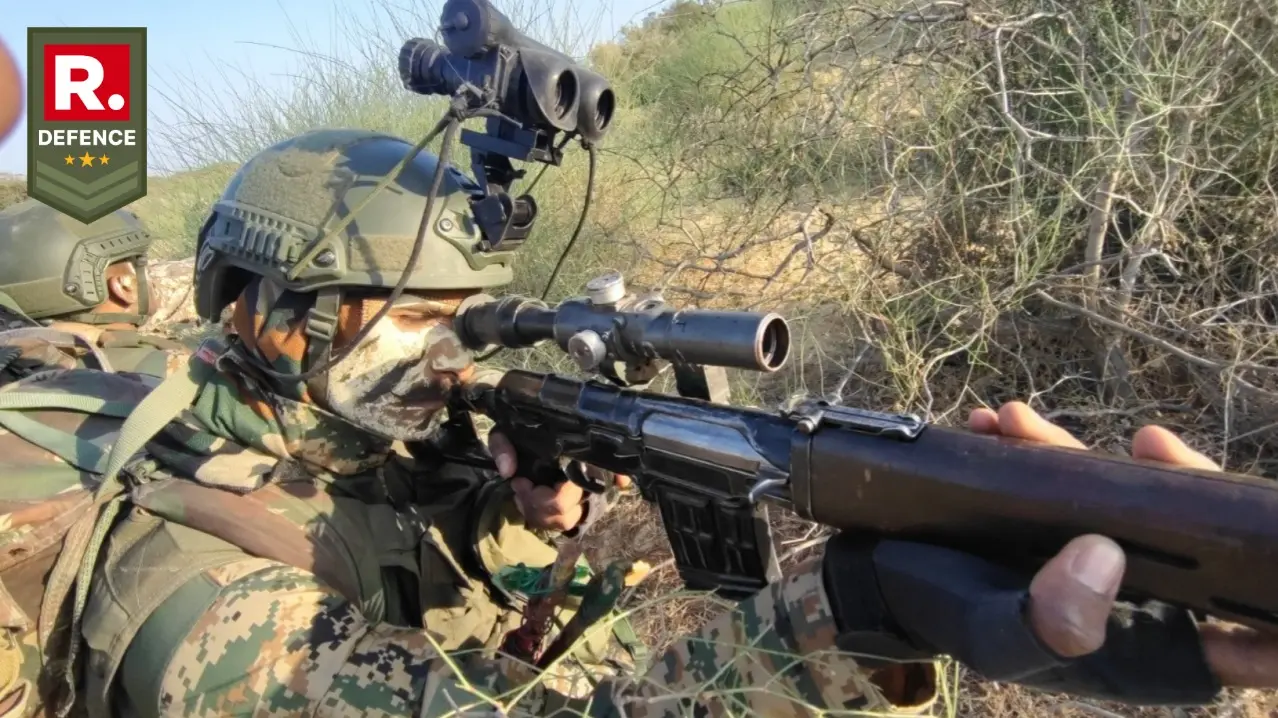Updated 8 April 2025 at 14:14 IST
Exercise SARVSHAKTI Pushes Indian Soldier into AI Battlefield with Drones, Bots, and Decision Algorithms
The Indian Army has field-validated Manned-Unmanned Teaming (MUM-T) for the first time during Exercise SARVSHAKTI in Sikkim.
- Defence News
- 4 min read

New Delhi, India - With Chinese infrastructure rapidly expanding across the Line of Actual Control (LAC) and hybrid warfare becoming the new norm, the Indian Army has quietly crossed a significant milestone. During the high-octane Exercise SARVSHAKTI, conducted by the Trishakti Corps in Sikkim, the Army validated the use of Manned-Unmanned Teaming (MUM-T) in a live tactical environment. For the first time at this scale, traditional manned platforms operated in tandem with drones, autonomous sensors, and AI-backed decision tools—offering a glimpse of what future battlefields might actually look like.
MUM-T is no longer a theory or R&D showcase—it’s now a field-validated Indian capability. The exercise was aimed at preparing formations for Multi-Domain Operations (MDO), where land, air, cyber, and electronic warfare domains converge in real-time. “This is not just about technology. This is about transforming the Indian soldier into a digitally networked combatant,” said Lt Gen Zubin A Minwalla, GOC Trishakti Corps, at the end of the validation cycle.
AI-Driven Warfare: Not the Future—The Now
From live reconnaissance to target acquisition, unmanned aerial systems fed real-time data into AI engines that processed battlefield variables faster than humanly possible. The result was clear: enhanced situational awareness, rapid-fire decision loops, and minimal delays in retaliation. Army officials confirmed that this is the closest Indian ground forces have come to fully realizing a sensor-to-shooter loop at the tactical level.

What changed this time was not just the use of drones, but how they were embedded. Unmanned systems were not flying solo—they were integrated directly with infantry columns, vehicle convoys, and battlefield commanders through secure communication networks. This meant that a commander on the ground could get a drone’s eye view, AI-assisted threat analysis, and weapons alignment feedback without ever breaking formation.
Advertisement
FPV Drones Go Lethal: Indian Army Tests Kamikaze Tech in Pathankot
While SARVSHAKTI dominated the headlines in the east, a smaller but equally disruptive development occurred in Pathankot. The Fleur-De-Lis Brigade, operating under the Western Command, successfully field-tested an FPV (First Person View) drone equipped with kamikaze-role anti-tank munitions.
These drones, developed in-house in collaboration with DRDO’s Terminal Ballistics Research Laboratory (TBRL), are nimble, cost-effective, and purpose-built for short-range precision strikes. Equipped with an impact-triggered payload and remote-operable targeting, the drone was flown through a complex obstacle course before neutralizing a mock armoured vehicle.
Advertisement
It’s a significant achievement for an Army often criticised for lagging behind in integrating low-cost loitering munitions. This marks a definitive shift towards "swarm warfare" and asymmetric drone tactics, seen increasingly in theatres like Ukraine and the Middle East. The Army confirms that further trials for swarm-based kamikaze drones are underway, with prototypes being developed for high-altitude operations as well.
Why This Matters: Beyond Optics, Toward Reform
Unlike conventional firepower displays, SARVSHAKTI and the FPV drone tests represent a mindset shift. The Indian Army has long operated under rigid hierarchical structures and platform-heavy doctrines. However, with China’s PLA adopting full-spectrum MDO frameworks, including battlefield AI and drone swarms, the Indian military cannot afford business as usual.
As recently as 2022, India lacked doctrine-level clarity on MUM-T integration. But today, the Indian Army has not only fielded such systems but validated their interoperability with boots on the ground. It’s a sign that defence modernisation isn’t just on paper anymore—it’s operational.

Moreover, this push is also indigenous. The drones are locally built. The software integrations are coded by Indian startups and DRDO labs. The soldiers are trained within Army warfighting schools and field formations. No foreign OEMs. No leased capability. That in itself is a victory.
Next Steps: Scaling MUM-T, Swarm Tech, and Tactical AI
Army sources confirm that SARVSHAKTI is part of a larger plan to institutionalise MUM-T in all forward-deployed Corps by 2026. The plan includes the acquisition of FPV drones with jamming-resistant capabilities, the use of AI-generated combat scenarios during training, and automated logistics nodes for high-altitude warfare.
Even as China continues to deploy robotic dogs, quadcopters with grenades, and satellite-cued artillery along the LAC, India’s pivot to such disruptive tech couldn’t be more timely. For once, the response is not reactive—it’s proactive, field-tested, and scalable. Lt Gen Minwalla perhaps summed it up best: “In SARVSHAKTI, we didn’t just use drones. We proved that the Indian soldier can dominate the battlefield with them.”
Watch- Indian Soldiers Along Snow Clad LOC
Published By : Yuvraj Tyagi
Published On: 8 April 2025 at 14:14 IST
